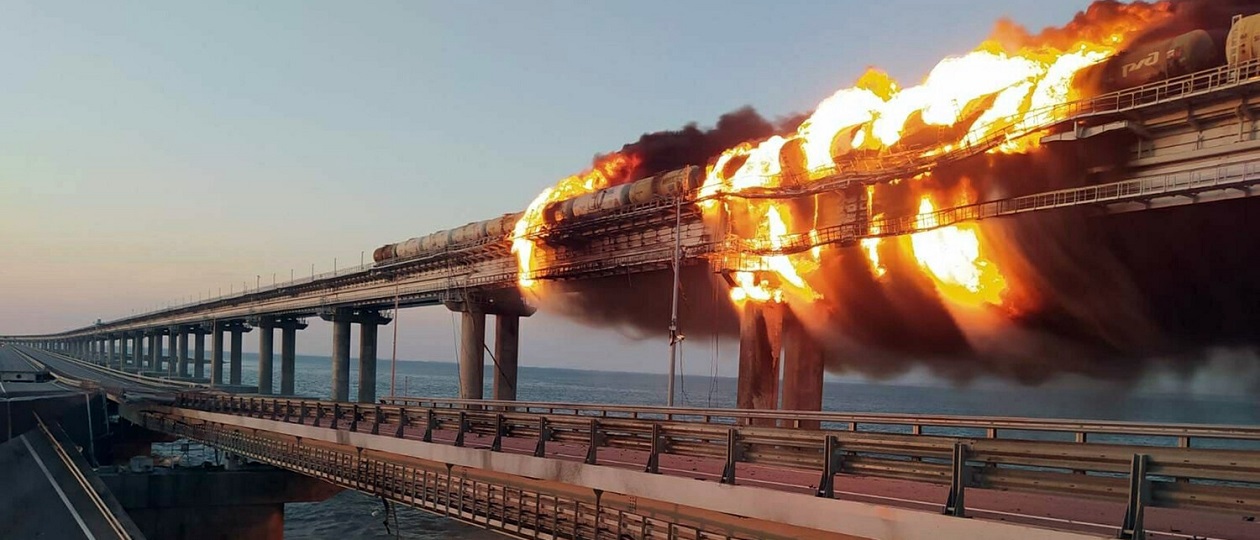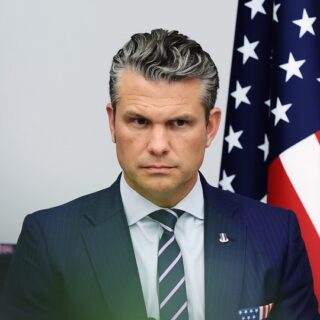
Another successful attack of the Armed Forces of Ukraine on the Crimean Bridge was inevitable due to two factors.
The first is political, connected with the policy of “agreements” with Ukraine and its allies, which the Kremlin and President Vladimir Putin personally are actively trying to pursue. The “grain deal” allowed Ukraine to launch semi-submersible kamikaze drones from the sea coast near Odessa, as well as from sea cargo ships that provide this deal from the Black Sea.
This is also facilitated by a virtual ban on strikes against Ukrainian transport communications, as well as against production facilities involved in the production of Ukrainian Mykola-3 marine drones, as well as against energy facilities that provide these enterprises with energy.
The second factor is military-technical. The Russian army does not have weapons systems capable of successfully combating semi-submersible kamikaze drones.
Hundreds of defense industries and research institutes were deliberately destroyed in the largest deindustrialization in world history in 30 years. As a result, thousands of technologies were lost, and in this regard, our lagging behind the advanced countries is already decades.
For a successful fight against semi-submersible kamikaze drones, their timely detection by means of space and aviation technical intelligence is necessary.
But our space grouping is extremely small in number and is not able to fulfill this task.
Our naval aviation is more dead than alive. In order to timely detect these drones and target strike aircraft at them, it is necessary to ensure round-the-clock patrolling of the airspace over the Black Sea by anti-submarine patrol aircraft equipped with modern radar equipment for detecting surface and underwater objects.
But according to the open press, we have only 22 obsolete Il-38 anti-submarine aircraft and about 20 Tu-142s in the Northern and Pacific fleets. All of them, in terms of their tactical and technical characteristics, do not meet the requirements of today and are significantly inferior to the modern American Boeing P-8 Poseidon anti-submarine aircraft, of which only the United States has 128 and dozens of their allies.
In addition, it is not known whether the outdated radar equipment of our Il-38 and Tu-142 will be able to provide effective detection of small-sized semi-submersible kamikaze drones. The supply of new anti-submarine aircraft for the Russian army is not even planned.
Another effective means of detecting semi-submersible kamikaze drones are airborne early warning and control aircraft (AWACS), which easily detect surface sea targets. But even with this we have huge problems. Our nine obsolete A-50 (A-50U) aircraft manufactured in the 1980s, due to their small number, are not capable of meeting all the needs of the Armed Forces, and we do not have the production of new AWACS aircraft.
And without long-range detection of semi-submersible kamikaze drones by technical means, followed by targeting strike aircraft at them, an effective fight against them “on distant frontiers” is impossible.
Only passive means of combat remain — blocking the Kerch Strait with booms, which proved their effectiveness back in the years of the First World War for combating submarines. Judging by today’s attack, they are absent in the Kerch Strait. Why?
Is there a large sea traffic from the Black Sea to the Sea of Azov and vice versa in the conditions of war in connection with the entry of the Russian grouping to the coast of the Sea of Azov and its transformation into the inland sea of the Russian Federation? Is it really impossible to temporarily completely stop this traffic and thereby secure the Crimean bridge at least from the strikes of semi-submersible kamikaze drones.
Although I am sure that now among my readers there will be many who will begin to ask the question: “What does Putin have to do with it?”, I hope most people don’t ask this question.





